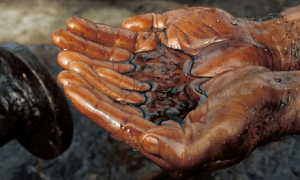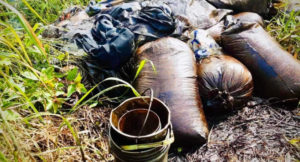Crude oil is a liquid petroleum found accumulated in various porous rock formations in the earth’s crust and is extracted for burning as fuel or for processing.
It is a brownish-black or dark-green liquid mixture. It consists mainly of hydrocarbons.
However, while petroleum includes crude oil and products, crude oil is just the raw, unprocessed oil itself.

Types of Crude Oil
- Class A: Light, Volatile Oils. These oils are:
- Class B: Non-Sticky Oils. These oils have a waxy or oily feel. …
- Class C: Heavy, Sticky Oils. Class C oils are characteristically:
- Class D: Non-fluid Oils.

Here are some common uses for crude oil that go beyond fuel you may not have realised:
- Plastics
As noted above, plastic requires crude oil for its production. Since there are so many products that use plastic, this resource is in high demand. You’re probably reading this article on a device that uses plastic in its construction. You may be surrounded by plastic products in your home or at work. It’s hard to get away from this versatile product.
- Clothing materials
Petroleum is essential for the creation of clothing. It helps to make clothing that is colourful and non-flammable. Polyester, rayon, nylon, and some fake furs all use crude oil.
- Products in your home
Believe it or not, if you’re sitting on your couch or other furniture with a cushion, you’re probably sitting on a product created using crude oil. Polyurethane foam is a petroleum-based material that is often used for couch cushions. It’s durable, so it can take a beating from years of people sitting and laying on it while being lightweight. Also, your flooring could be another hidden crude oil product in your home. Both linoleum and carpet are made using petroleum.

- Many of the appliances that are in your kitchen require crude oil as well. Your refrigerator is a prime example. It contains foam insulation, door liners, and moulded interior panels for shelving that are all made with crude oil.
- One product, insulation, that you rely on to keep your home warm in the winter and stay cool in the summer is made using crude oil. Insulation helps to keep your home’s temperature regulated.

- Food production
You may want to cringe thinking of crude oil being used in the production of food items, but it is a necessary piece of the process. Some fertilizers used to grow your food need this product. Transportation is a more “tame” use for crude oil in the industry, with commercial vehicles delivering food all over the country. The packaging that your food comes in is also made using plastic.
- Transportation
Your car is another item that uses crude oil in the manufacturing process. Your car’s bumper, interior, and even engine block components are made with high-performance plastics. These are used because they are lightweight and can help improve the fuel economy of the car. They can also help to enhance the safety of the vehicle.
Which country has the best quality crude oil?
Tapis, a type of crude found only in Malaysia, is considered the best quality oil in the world. Light and sweet, it’s benchmark traded in Singapore and coveted for its remarkably low sulphur content (0.04 per cent) and low density of between 43 and 45° API.

What type of crude oil is used in Nigeria?
Nigeria’s petroleum is classified as “light” and “sweet” because the oil is free of sulphur. Nigeria is the largest producer of sweet oil in OPEC. This sweet oil is similar in composition to petroleum extracted from the North Sea. This crude oil is known as” Bonny Light”.

Why is Nigeria’s crude oil the best in the world?
The more sulfur crude oil contains, the less energy it produces per gallon, barrel, or litre. This is the main reason why Nigerian crude oil (Bonny light) is regarded as one of the better forms of crude oil, and why based on pricing bonny light tends to be amongst the most expensive.

How is crude oil sold?
Crude oil is traded in the futures markets. A futures contract is a standard contract to buy or sell a specific commodity of standardised quality at a certain date in the future.
Who owns oil in Nigeria?
The Nigerian Federal Government. Legal premise. According to the Nigerian constitution, all minerals, gas, and oil the country possesses are legally the property of the Nigerian Federal Government. The revenue gained by the NNPC accounts for 76% of federal government revenue and 40% of the entire country’s GDP.

Who discovered oil in Nigeria?
Shell Darcy. Oloibiri Oilfield was discovered on Sunday 15 January 1956 by Shell Darcy. It was the first commercial oil discovery in Nigeria; this discovery ended 50 years of unsuccessful oil exploration in the country by various international oil companies and launched Nigeria into the limelight of the Petro-State.
Which state in Nigeria had the first oil?
Oil was first discovered in Oloibiri, in Nigeria’s Bayelsa State, in 1956.

Who buys Nigerian crude oil?
As of 2021, India emerges as the largest importer of Nigerian crude oil, with Spain following behind, and The Netherlands securing the third position.
Who is Nigeria’s biggest customer for oil?
The main destination areas of crude oil from Nigeria are Europe and Asia. In the second quarter of 2023, the export value of crude oil to Europe amounted to about 1.48 trillion Naira, while exports to Asia followed with 1.2 trillion Naira. (Channels TV)